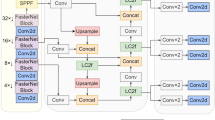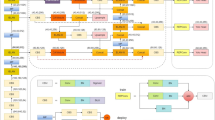Abstract
The world’s ocean depths conceal a big mystery, and obtaining the information contained therein is a significant challenge that must be overcome. With the advent of computer vision technologies and robotics, the underwater environment is explored recently. The vast data collected from numerous underwater sensors have a variety of complications related to inadequate image quality, difficulty in acquiring training samples, and uncontrolled objects in the underwater environment. When these images are processed using machine learning techniques that involve manual intervention, the time taken to process a huge amount of images will be relatively high and prone to errors. To tackle these, we propose a novel hybrid capuchin-based coevolving particle swarm optimization (HC2PSO) algorithm with a ResNet model of Convolutional Neural Network (CNN) architecture for underwater object identification. This work mainly aims to explore different underwater objects such as fish, corals, sea urchins, etc. The speckle-reducing anisotropic diffusion (SRAD) filter performs the pre-processing step. The denoising autoencoder (DA) is used for feature extraction which can enhance the partially distorted sample images and offer increased robustness. To overcome the overfitting issue in CNN, the HC2PSO algorithm is used. The experimental works are handled in MATLAB software. Both with and without pre-processing results in terms of SRAD filter are checked and evaluated. The proposed method’s effectiveness is evaluated through various measures like accuracy, specificity, sensitivity, false-positive rate, false-negative rates, etc. The accuracy of the HC2PSO-CNN classifier is higher when compared to the standard CNN classifier in recognizing the underwater objects when evaluated with different performance metrics.










Similar content being viewed by others
Data availability
Data sharing is not applicable to this article as no new data were created or analyzed in this study.
Code availability
Not applicable.
References
Berman D, Levy D, Avidan S, Treibitz T (2020) Underwater single image color restoration using haze-lines and a new quantitative dataset. IEEE Trans Pattern Anal Mach Intell 43:2822–2837
Braik M, Sheta A, Al-Hiary H (2021) A novel meta-heuristic search algorithm for solving optimization problems: capuchin search algorithm. Neural Comput & Applic 33(7):2515–2547
Chen W, Fan B (2020) Underwater object detection with mixed attention mechanism and multi-enhancement strategy. In: 2020 Chinese automation congress (CAC). IEEE, pp 2821–2826
Fayaz S, Parah SA, Qureshi GJ (2022) Underwater object detection: architectures and algorithms–a comprehensive review. Multimed Tools Appl 81(15):20871–20916
Gehring J, Miao Y, Metze F, Waibel A (2013) Extracting deep bottleneck features using stacked auto-encoders. In: 2013 IEEE international conference on acoustics, speech and signal processing. IEEE, pp 3377–3381
Han F, Yao J, Zhu H, Wang C (2020) Underwater image processing and object detection based on deep CNN method. J Sensors 2020:1–20
Jalled F, Voronkov I (2016) Object detection using image processing. arXiv preprint arXiv:1611.07791
Krohling RA, dos Santos Coelho L (2006) Coevolutionary particle swarm optimization using Gaussian distribution for solving constrained optimization problems. IEEE Trans Syst Man Cybern B Cybern 36(6):1407–1416
Kvasić I, Mišković N, Vukić Z (2019) Convolutional neural network architectures for sonar-based diver detection and tracking. In: OCEANS, 2019-Marseille. IEEE, pp 1–6
Li C, Guo C, Ren W, Cong R, Hou J, Kwong S, Tao D (2019) An underwater image enhancement benchmark dataset and beyond. IEEE Trans Image Process 29:4376–4389
Li Z, Yuan Y, Ma D (2021) Selection based on statistical characteristics for object detection. In: ICASSP 2021-2021 IEEE international conference on acoustics, speech, and signal processing (ICASSP). IEEE, pp 1485–1489
Lin WH, Zhong JX, Liu S, Li T, Li G (2020) Roimix: proposal-fusion among multiple images for underwater object detection. In: ICASSP 2020-2020 IEEE international conference on acoustics, speech, and signal processing (ICASSP). IEEE, pp 2588–2592
Lu H, Li Y, Xu X, He L, Li Y, Dansereau D, Serikawa S (2016) Underwater image descattering and quality assessment. In: 2016 IEEE international conference on image processing (ICIP). IEEE, pp 1998–2002
Lu H, Li Y, Zhang Y, Chen M, Serikawa S, Kim H (2017) Underwater optical image processing: a comprehensive review. Mob Netw Appl 22(6):1204–1211
Mitra V, Wang CJ, Banerjee S (2006) Lidar detection of underwater objects using a neuro-SVM-based architecture. IEEE Trans Neural Netw 17(3):717–731
Pan T-S, Huang H-C, Lee J-C, Chen C-H (2021) Multi-scale ResNet for real-time underwater object detection. SIViP 15(5):941–949
Qin X, Luo X, Wu Z, Shang J (2021) Optimizing the sediment classification of small side-scan sonar images based on deep learning. IEEE Access 9:29416–29428
Ranganath HS, Kuntimad G (1999) Object detection using pulse coupled neural networks. IEEE Trans Neural Netw 10(3):615–620
Shakya S (2020) Analysis of artificial intelligence based image classification techniques. J Innov Image Process 2(01):44–54
Singh S, Suri A, Singh JN, Singh M, Yadav DK (2021) Object identification and tracking using YOLO model: a CNN-based approach. In: Machine learning and information processing. Springer, Singapore, pp 153–160
Wang Z, Liu C, Wang S, Tang T, Tao Y, Yang C, Li H, Liu X, Fan X (2020) UDD: an underwater open-sea farm object detection dataset for underwater robot picking. arXiv e-prints, pp.arXiv-2003
Wei X, Yu L, Tian S, Feng P, Ning X (2021) Underwater target detection with an attention mechanism and improved scale. Multimed Tools Appl 80(25):33747–33761
Yoo H, Han S, Chung K (2021) Diagnosis support model of cardiomegaly based on CNN using ResNet and explainable feature map. IEEE Access 9:55802–55813
Yu Y, Acton ST (2002) Speckle reducing anisotropic diffusion. IEEE Trans Image Process 11(11):1260–1270
Zhang J, Cao Y, Han G, Fu X (2019) Deep neural network-based underwater OFDM receiver. IET Commun 13(13):1998–2002
Zhao Z, Liu Y, Sun X, Liu J, Yang X, Zhou C (2021) Composited FishNet: fish detection and species recognition from low-quality underwater videos. IEEE Trans Image Process 30:4719–4734
Author information
Authors and Affiliations
Corresponding author
Ethics declarations
Informed consent
Informed consent does not apply as this was a retrospective review with no identifying patient information.
Human and animal rights
This article does not contain any studies with human or animal subjects performed by any of the authors.
Conflict of interest
The authors declare that they have no conflict of interest.
Additional information
Publisher’s note
Springer Nature remains neutral with regard to jurisdictional claims in published maps and institutional affiliations.
Appendix
Appendix
The probability density functions can be given as abs(N(0, 1)) and can be determined as,
The average value of abs(N(0, 1)) is estimated as,
The variance value can be calculated for the abs(N(0, 1)) as shown below,
From the above eqn, the obtained SD is σ = 0.60. Then it is essential to produce the stochastic coefficients for the terms (PSi − ai(t)) and (PSη − ai(t)). Henceforth the velocity equation can be upgraded as,
The positive random number generated by the abs(N(0, 1)) is represented as |rann| and |ran1n|. Assume a random variable c that has been obtained from the sum of the above-mentioned random variables. The probability density function is considered as p(a). from this, the probability distribution function is determined as,
Here the value of erf(c) is defined as,
Thus the generation of stochastic coefficients with the aid of abs(N(0, 1)) enables the compromise among a large number of low amplitudes and the less number of maximum amplitudes i.e., fine-tuning of parameters.
Rights and permissions
Springer Nature or its licensor (e.g. a society or other partner) holds exclusive rights to this article under a publishing agreement with the author(s) or other rightsholder(s); author self-archiving of the accepted manuscript version of this article is solely governed by the terms of such publishing agreement and applicable law.
About this article
Cite this article
Malathi, V., Manikandan, A. & Krishnan, K. Optimzied resnet model of convolutional neural network for under sea water object detection and classification. Multimed Tools Appl 82, 37551–37571 (2023). https://doi.org/10.1007/s11042-023-15041-5
Received:
Revised:
Accepted:
Published:
Issue Date:
DOI: https://doi.org/10.1007/s11042-023-15041-5




